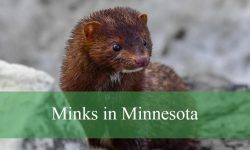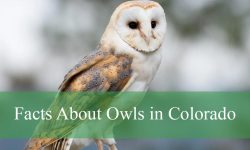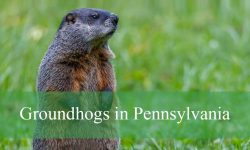Squirrels in Wisconsin come in many species, each displaying distinct colors, sizes, and behaviors that reflect their unique adaptations. From the nimble chipmunks to the larger fox squirrels, these creatures are an integral part of the local wildlife.
These squirrels play important roles in the ecosystem, helping with seed dispersal and providing food for predators. They can be spotted in forests, urban parks, and even backyards across the state, each adapted to thrive in its preferred environment.
This guide covers 11 types of squirrels found in Wisconsin, with details on their identification, diet, habitat, and interesting facts to help you recognize them in the wild.
Common Squirrels Found in Wisconsin
Eastern Gray Squirrel (Sciurus carolinensis)
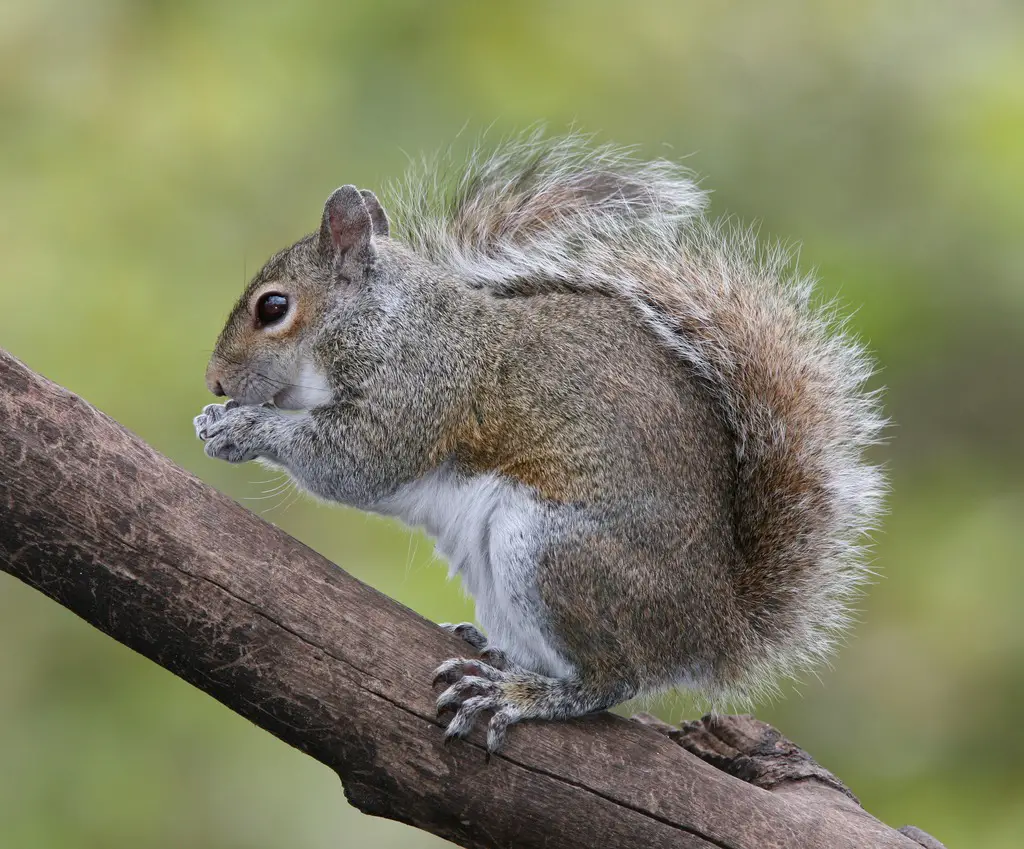
The Eastern Gray Squirrel is one of the most common and easily recognized squirrels in Wisconsin. Its fur is predominantly gray, often with a hint of brown on the back, and a white or pale underbelly. The bushy tail is edged with white hairs, adding to its striking appearance. Adults typically measure 16 to 20 inches in total length, including a tail that can be 7 to 10 inches long, and they weigh between 1 and 1.5 pounds.
In terms of behavior, Eastern Gray Squirrels are highly adaptable and active during the day, particularly in the early morning and late afternoon. They are agile climbers, capable of leaping several feet between branches. During winter, they do not hibernate but may stay in their nests for several days during harsh weather. Their nests, called dreys, are usually built high in deciduous trees and are constructed from leaves and twigs.
Their diet in Wisconsin is diverse, including acorns, walnuts, hickory nuts, seeds, buds, fungi, and the occasional insect or bird egg. In autumn, they are famous for burying nuts in scattered caches to eat during winter—a behavior that inadvertently helps in forest regeneration. Gray squirrels use their excellent memory and sense of smell to recover many of these stored nuts, though some remain buried and sprout into new trees.
In Wisconsin, Eastern Gray Squirrels thrive in both urban parks and mature hardwood forests, particularly those dominated by oak, hickory, and maple. A fun fact is that they exhibit “deceptive caching,” pretending to bury a nut while actually hiding it in their mouth, to trick potential food thieves such as other squirrels or blue jays.
Fox Squirrel (Sciurus niger)
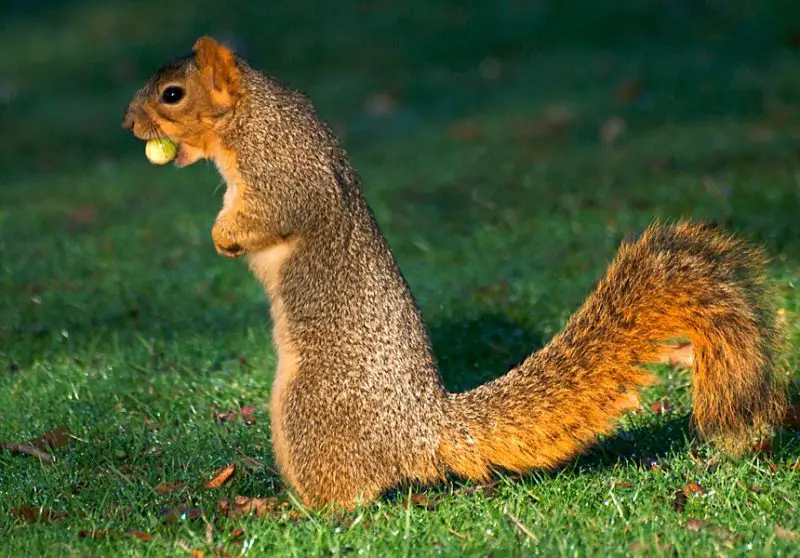
The Fox Squirrel is the largest tree squirrel species found in Wisconsin, with a body length of 10 to 15 inches and a tail length of 8 to 13 inches. Adults can weigh up to 2.5 pounds. Their fur is generally rusty orange or reddish-brown on the body, with a paler belly and a thick, bushy tail edged in black and orange. The name “fox” refers to their coloration, which can resemble that of a red fox.
Fox Squirrels are more ground-oriented than other tree squirrels, spending significant time foraging on lawns, fields, and forest edges. They are most active in the early morning and late afternoon, using their strong hind legs to make impressive leaps and their sharp claws for climbing. Unlike gray squirrels, fox squirrels are often solitary, except during the breeding season or when raising young.
Their diet in Wisconsin consists of acorns, walnuts, corn, seeds, berries, fungi, and occasionally insects or small bird eggs. In agricultural areas, they may forage on waste grain and are sometimes seen feeding on suet or birdseed in backyard feeders. They also bury nuts in scattered locations, which helps plant new trees in rural and suburban areas.
Fox Squirrels prefer open woodlands, forest edges, and areas with scattered mature trees. In Wisconsin, they are commonly seen in rural farmland regions and along woodland borders. A fun fact is that their jaw muscles are so strong that they can chew through hickory nuts and even black walnuts, which have some of the toughest shells in the nut world.
American Red Squirrel (Tamiasciurus hudsonicus)
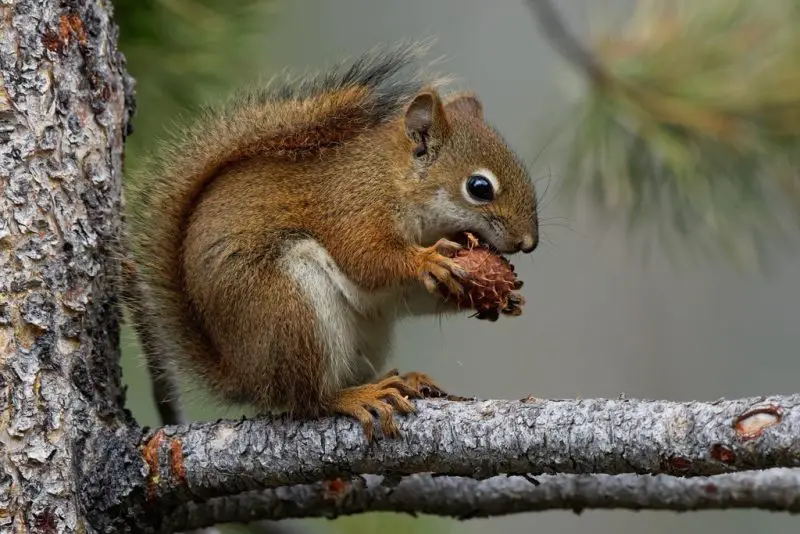
The American Red Squirrel is a small but feisty squirrel, measuring 11 to 14 inches long, including its 4 to 6-inch tail. It weighs only 7 to 9 ounces, but its bold behavior often makes it seem much larger. Its fur is a rich reddish-brown on the back, with a white belly and a faint black line along the sides during summer. In winter, their coat becomes thicker and grayer, but the tail remains reddish.
Red Squirrels are highly territorial and will aggressively defend their home range from other squirrels and even birds. They produce a rapid, chattering call to warn intruders. In Wisconsin, they are especially common in northern coniferous and mixed forests. They are agile climbers, moving quickly through the treetops in search of food and nesting sites.
Their diet centers heavily around seeds from conifer trees, particularly white pine and spruce. They also eat nuts, berries, fungi, and occasionally insects or bird eggs. Red squirrels are known for creating large food caches called “middens,” where they store cones and seeds for winter. These middens can grow to impressive sizes over the years and are essential to the squirrel’s survival during the snowy months.
In Wisconsin, the American Red Squirrel is most often encountered in forested state parks, northern woodlands, and areas with dense pine stands. A fun fact is that they sometimes store mushrooms by impaling them on tree branches to dry before eating—a behavior unique among squirrels in North America.
Northern Flying Squirrel (Glaucomys sabrinus)
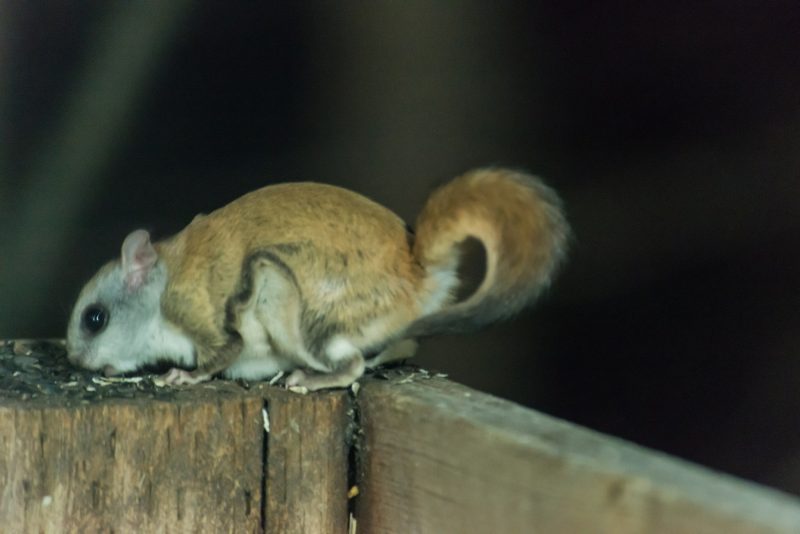
The Northern Flying Squirrel is a nocturnal and elusive species, making it less frequently seen by people in Wisconsin. Adults measure 10 to 13 inches long, with a 4 to 5-inch tail, and weigh between 3 and 5 ounces. Their fur is soft and brownish-gray, with a white belly, and they have large, dark eyes adapted for night vision. A key feature is the patagium, a furred membrane stretching from wrist to ankle, allowing them to glide between trees.
These squirrels are expert gliders, capable of covering 50 to 150 feet in a single leap. They use their tail as a rudder to steer and stabilize in the air, landing with precision on their chosen tree trunk. They are highly social, often nesting in groups during winter to share body heat. Nests are typically found in tree cavities, abandoned woodpecker holes, or large dreys made of moss, leaves, and bark.
Their diet includes fungi, lichens, seeds, nuts, berries, and insects. Fungi play a particularly important role in their diet and in forest health, as flying squirrels help disperse fungal spores that form symbiotic relationships with tree roots. In Wisconsin, they are more common in northern and central old-growth forests, particularly where spruce and hemlock are present.
A fun fact is that the Northern Flying Squirrel is considered a “species of special concern” in Wisconsin due to habitat loss. Their presence is often detected through nocturnal surveys or by finding their distinctive gliding paths between trees on moonlit nights.
Southern Flying Squirrel (Glaucomys volans)
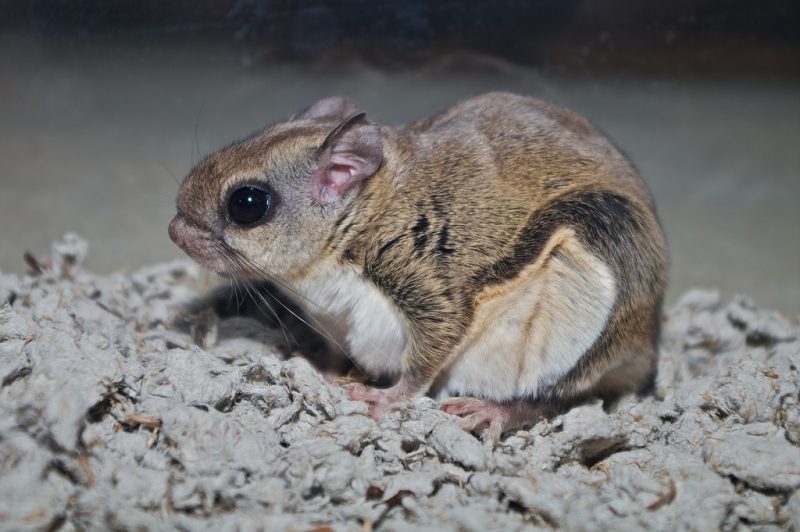
The Southern Flying Squirrel is slightly smaller than its northern cousin, measuring 8 to 10 inches in total length, including a 3 to 4-inch tail, and weighing about 2 to 3 ounces. Its fur is silky gray-brown on the back and white on the belly, with large black eyes and a flattened tail. Like the Northern Flying Squirrel, it has a patagium for gliding, but its smaller size makes it even more agile in the air.
These squirrels are strictly nocturnal and are among the most social of all squirrel species. They frequently nest together in groups during winter and communicate using high-pitched ultrasonic calls that humans cannot hear. Their nests are found in tree cavities, under loose bark, or in attics where they sometimes surprise homeowners.
Southern Flying Squirrels feed on a varied diet of nuts, seeds, berries, fungi, and insects. They are also known to eat bird eggs and nestlings on occasion. In Wisconsin, they are more commonly found in the southern and central parts of the state, especially in deciduous forests with abundant oak, hickory, and beech trees.
A fun fact is that despite being widespread, many Wisconsin residents have never seen a Southern Flying Squirrel in the wild due to its secretive, night-active lifestyle. Wildlife researchers often use special nest boxes and night cameras to study them, revealing that they can glide distances over 200 feet under ideal conditions.
Thirteen-Lined Ground Squirrel (Ictidomys tridecemlineatus)
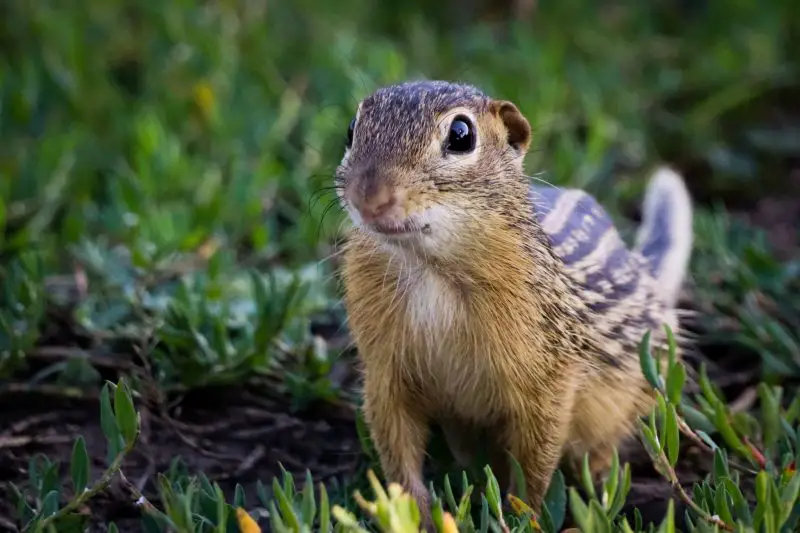
The Thirteen-Lined Ground Squirrel is a small, slender ground-dwelling species easily identified by its distinctive coat. Its fur is light brown with 13 alternating light and dark stripes running the length of its body, some dotted and some solid. Adults measure about 7 to 12 inches long, including a short tail, and weigh between 4 and 9 ounces. Their compact body and sharp claws are perfect for digging intricate burrow systems.
These squirrels are diurnal, active during the day, and spend much of their time foraging on the ground in open habitats. They are excellent diggers, creating tunnels that may have multiple entrances for escape from predators. Unlike tree squirrels, they are true hibernators, spending nearly seven months underground during Wisconsin’s cold winter months.
Their diet is highly varied, consisting of seeds, grasses, grains, insects, and even small vertebrates like young mice or small snakes. In agricultural areas of Wisconsin, they are often seen feeding on clover or seeds along field edges. Their opportunistic feeding helps them survive in environments where plant-based food is not always available.
In Wisconsin, they are most common in prairies, open fields, golf courses, and roadside grassy areas. A fun fact is that the Thirteen-Lined Ground Squirrel is an excellent sprinter, able to dart into its burrow in less than a second when startled—a survival adaptation against hawks, foxes, and snakes.
Franklin’s Ground Squirrel (Poliocitellus franklinii)

Franklin’s Ground Squirrel is a medium-sized burrowing rodent with a chunky body and short tail. Its fur is a grizzled mix of gray and brown, giving it a camouflaged look that blends well with tall grasses. Adults are typically 14 to 16 inches in length and weigh around 1 to 1.5 pounds, making them larger than most other ground squirrels in Wisconsin.
This species is shy and less commonly seen, as it spends much of its time hidden in tall vegetation. Franklin’s Ground Squirrels are also true hibernators, retreating to their burrows from late summer or early fall until spring. They are most active in the morning and late afternoon, foraging near the safety of cover.
Their diet is omnivorous, including seeds, fruits, leaves, insects, bird eggs, and small vertebrates. They play an important role in their ecosystem by aerating soil through their digging and serving as prey for coyotes, foxes, and raptors. Unlike many ground squirrels, they prefer habitats with taller vegetation rather than open fields.
In Wisconsin, they are most often found in the western and central parts of the state, especially near prairies, old fields, and woodland edges. A fun fact is that Franklin’s Ground Squirrels are known for their ability to climb small shrubs and low trees in search of berries, which is unusual for most burrowing squirrels.
Woodchuck / Groundhog (Marmota monax)
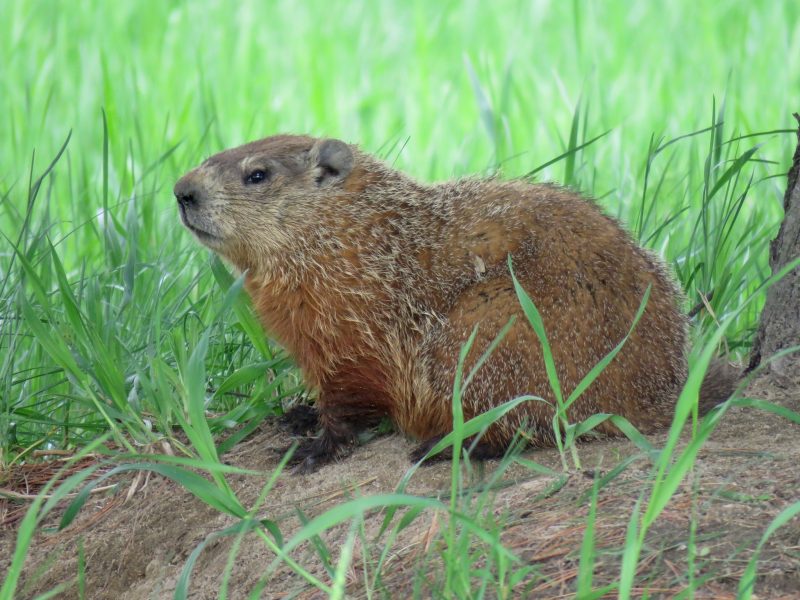
The Woodchuck, also known as the Groundhog, is the largest member of the squirrel family in Wisconsin. Adults measure 16 to 26 inches long, with a bushy tail about 4 to 7 inches, and weigh 4 to 14 pounds. Their stocky build, short legs, and coarse brown fur give them a bear-like appearance on a small scale.
Woodchucks are true hibernators, spending the winter in deep underground burrows where their body temperature drops significantly to conserve energy. In summer, they are most active in the early morning and late afternoon, spending much of the day basking in the sun or foraging. Their burrows often have multiple entrances and can be several feet deep, with separate chambers for sleeping and waste.
They are primarily herbivorous, eating grasses, clover, dandelions, garden vegetables, and occasionally bark or fruits. In agricultural and suburban areas, they can sometimes become pests by raiding gardens or undermining structures with their burrows. However, their burrows also provide shelter for other wildlife like rabbits, foxes, and snakes after they are abandoned.
In Wisconsin, Woodchucks are common in meadows, pastures, and woodland edges across the state. A fun fact is that despite their name, woodchucks do not actually chuck wood—the name comes from the Algonquin word “wuchak,” meaning “digger.”
Eastern Chipmunk (Tamias striatus)
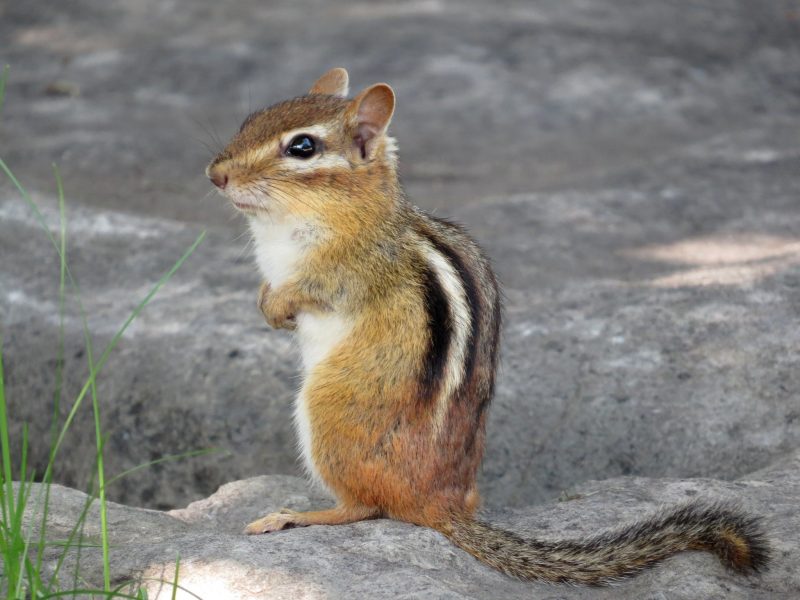
The Eastern Chipmunk is a small, lively rodent easily recognized by its reddish-brown fur, white belly, and five dark brown stripes separated by lighter bands along its back. Adults measure 8 to 10 inches long, including a 3 to 4-inch tail, and weigh between 2.5 and 4 ounces. Their large cheek pouches are used to carry food back to their burrows.
Chipmunks are active during the day, especially in the morning and late afternoon. They live in elaborate burrow systems with separate chambers for nesting, food storage, and waste. These burrows can extend over 30 feet in length and are usually hidden under logs, stumps, or dense vegetation.
Their diet includes acorns, seeds, berries, mushrooms, insects, and occasionally bird eggs. They play an important role in seed dispersal, helping to regenerate forests by forgetting some of their stored food. While they hibernate in winter, they wake occasionally to feed on stored food within their burrows.
In Wisconsin, Eastern Chipmunks are found in deciduous forests, suburban yards, and parks statewide. A fun fact is that their alarm call—a sharp “chip-chip-chip” sound—can alert other animals to the presence of predators like hawks or foxes.
Least Chipmunk (Neotamias minimus)
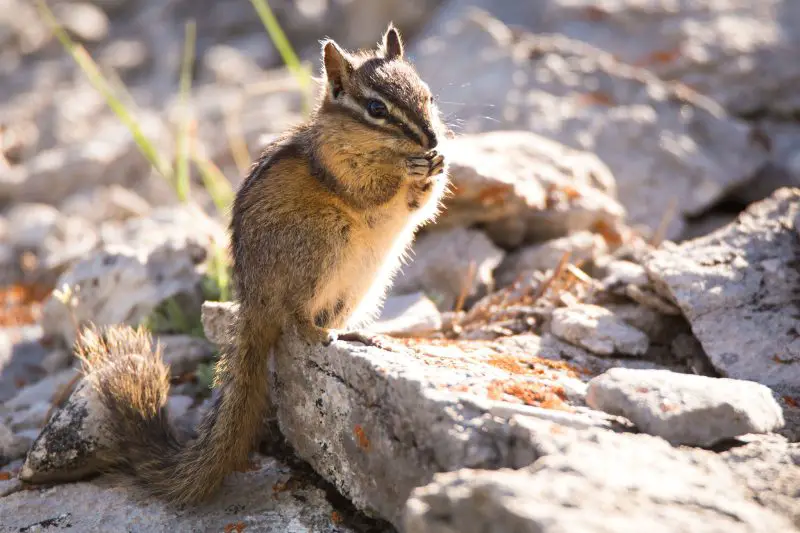
The Least Chipmunk is the smallest chipmunk species in Wisconsin, measuring only 6 to 8 inches long, including its tail, and weighing just 1 to 2 ounces. It has a slender body with bold stripes running from its nose to its rump, including on the head, which helps distinguish it from the Eastern Chipmunk. Its fur ranges from grayish-brown to reddish, with a pale underside.
This chipmunk is highly active and spends much of its time foraging on the ground but is also an agile climber. It prefers more open habitats than the Eastern Chipmunk, including forest edges, shrublands, and rocky areas. It is also more tolerant of dry habitats and can be found in sandy or grassy regions.
Its diet consists of seeds, nuts, berries, insects, and fungi. Like other chipmunks, it stores food in underground caches to survive the winter. It enters hibernation in late fall but wakes periodically to eat stored food.
In Wisconsin, the Least Chipmunk is found mainly in the northern and central parts of the state. A fun fact is that despite its small size, it can travel long distances while foraging, sometimes venturing more than half a mile from its burrow in search of food.
Door County Chipmunk (Tamias striatus doorsiensis)
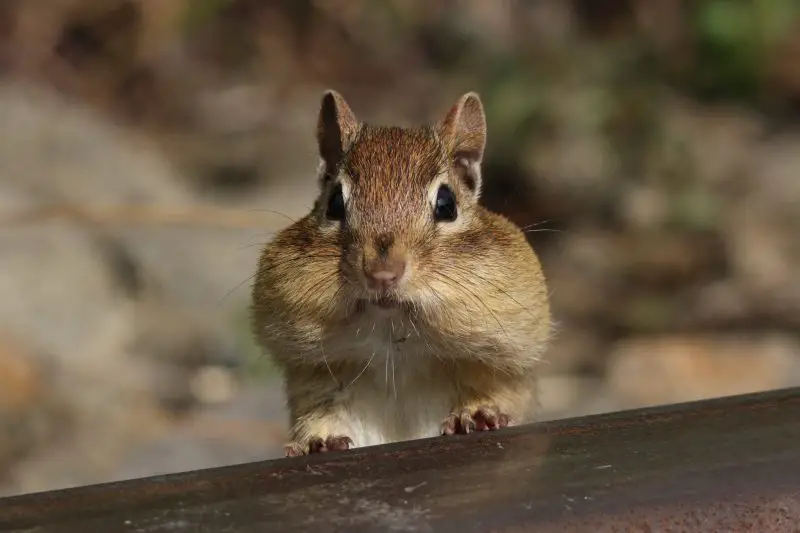
The Door County Chipmunk is a regional subspecies of the Eastern Chipmunk, found mainly in Door and Kewaunee counties of Wisconsin. It shares the general reddish-brown coloration and striped pattern of the Eastern Chipmunk but is often slightly smaller with subtle differences in stripe width and fur tone.
Its behavior is very similar to that of the Eastern Chipmunk, with a diurnal activity pattern and a reliance on underground burrows for shelter and food storage. It is a ground-dwelling species but can climb shrubs and low branches in search of berries and seeds.
The diet is also comparable, including nuts, seeds, berries, fungi, and insects. Seasonal food caching is essential for surviving the winter months, as this chipmunk hibernates but wakes occasionally to eat stored food.
This subspecies is restricted to a small geographic range in northeastern Wisconsin, making it of local interest to naturalists. A fun fact is that its limited range makes it particularly sensitive to habitat changes, and it may be a unique genetic variant adapted to the specific environmental conditions of the Door Peninsula.
FAQs About Squirrels in Wisconsin
What types of squirrels live in Wisconsin?
Wisconsin is home to a variety of squirrel species, including tree squirrels, flying squirrels, and ground squirrels. Common species include the Eastern Gray Squirrel, Fox Squirrel, American Red Squirrel, Northern and Southern Flying Squirrels, Thirteen-Lined Ground Squirrel, Franklin’s Ground Squirrel, and the Woodchuck. The state also has smaller relatives in the squirrel family, such as the Eastern Chipmunk, Least Chipmunk, and the locally unique Door County Chipmunk.
Which squirrel species is the most common in Wisconsin?
The Eastern Gray Squirrel is the most common and widespread squirrel in Wisconsin. It thrives in urban parks, suburban neighborhoods, and hardwood forests. Its adaptability, varied diet, and caching behavior make it well-suited to living close to humans.
Are there flying squirrels in Wisconsin?
Yes, Wisconsin has two species of flying squirrels: the Northern Flying Squirrel and the Southern Flying Squirrel. These nocturnal gliders use a skin membrane called a patagium to glide between trees. The Northern species prefers older coniferous forests in the north, while the Southern species is more common in southern and central hardwood forests.
Do squirrels in Wisconsin hibernate?
Tree squirrels like the Eastern Gray, Fox, and Red Squirrels do not hibernate; they remain active year-round, storing food for winter. However, some members of the squirrel family—such as the Thirteen-Lined Ground Squirrel, Franklin’s Ground Squirrel, and Woodchuck—are true hibernators, sleeping through the winter months in underground burrows.
Where can I see squirrels in Wisconsin?
Squirrels can be seen almost anywhere in Wisconsin, from rural forests to city parks. Tree squirrels are common in wooded areas with mature trees, flying squirrels require forested habitats with canopy cover, and ground squirrels prefer open grasslands and prairie edges. Chipmunks are widespread in both forests and suburban gardens.
What do squirrels in Wisconsin eat?
The diet of Wisconsin squirrels varies by species but generally includes nuts, seeds, fruits, fungi, and insects. Tree squirrels often cache acorns and walnuts for winter, flying squirrels rely heavily on fungi, and ground squirrels eat a mix of plants and insects. Some species will also eat bird eggs and small vertebrates if the opportunity arises.
Are any squirrel species in Wisconsin protected?
Yes, the Northern Flying Squirrel and Franklin’s Ground Squirrel are considered “species of special concern” in Wisconsin due to habitat loss and population decline. While they are not officially endangered, conservation efforts aim to protect their habitats and monitor their populations.
Can squirrels be pests in Wisconsin?
Squirrels can sometimes cause problems, especially when they chew on wooden structures, nest in attics, or raid bird feeders. Ground squirrels and woodchucks may damage gardens and crops or undermine buildings with their burrows. Preventive measures such as sealing entry points and using squirrel-proof feeders can help reduce conflicts.
Do squirrels help the environment?
Yes, squirrels play an important ecological role. By burying and forgetting some of their stored nuts, they help plant new trees and maintain forest ecosystems. Flying squirrels also disperse fungi spores, which are crucial for healthy tree root systems. Even their abandoned burrows can provide shelter for other wildlife.

